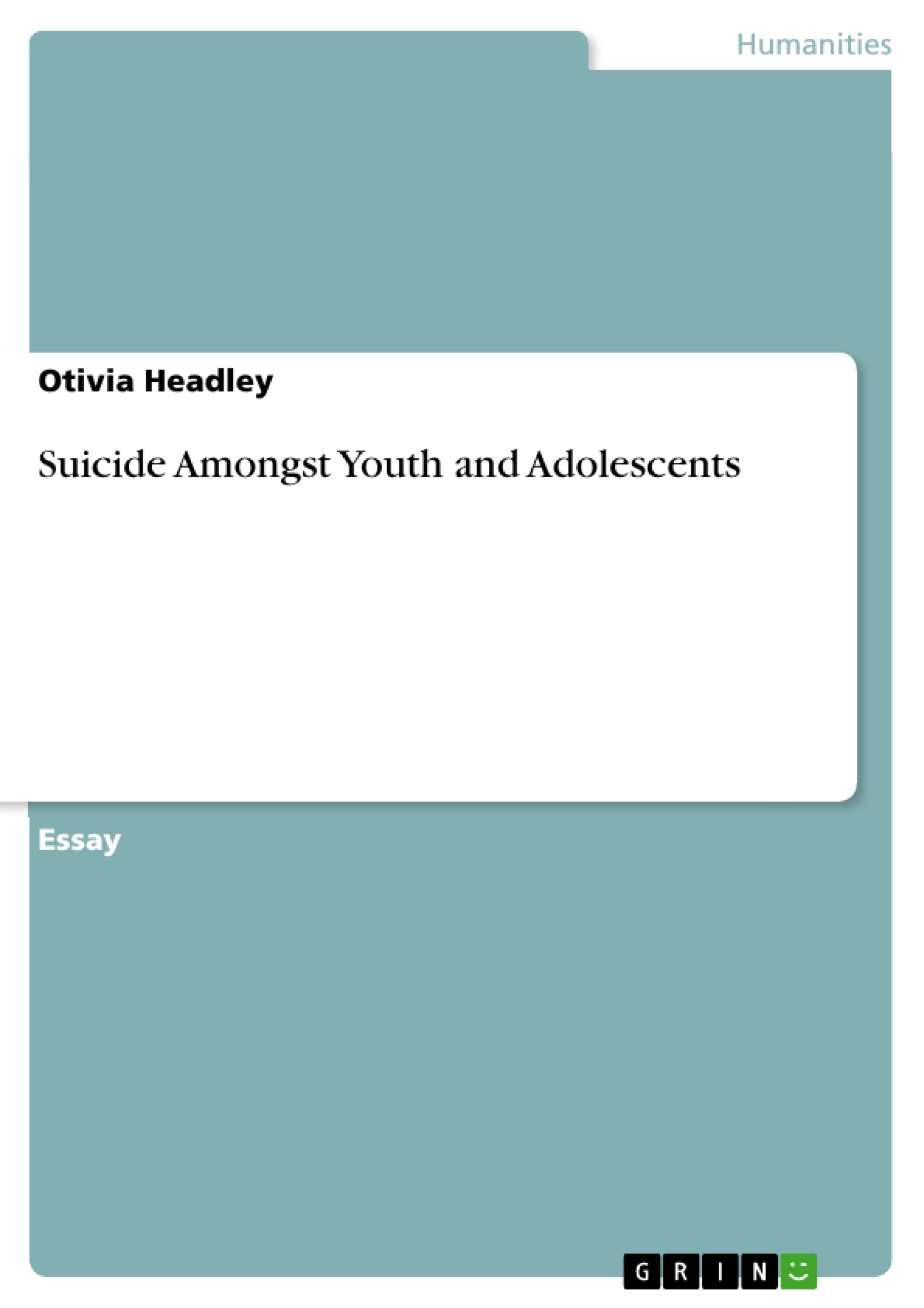This essay summarises the reasons for suicide among children and young adults as well as information articles on how to support persons who attempted suicide.
According to the CDC (Centers for Disease Control and Prevention), Suicide is a serious public health problem that affects even young people. The CDC goes on to state that Suicide is the 3rd leading cause of death for youth between the ages of 10 and 24 years of age, which results in approximately 4600 lives lost each year.
Even with the problematic issue of lives lost, suicide is only one part of the problem; the other half of the problem is suicide attempts. Results from a nationwide survey of youth in grades 9-12 in public and private schooling in the United States found that 16% of students reported seriously considering suicide, 13% reported creating a plan, and 8% reported trying to take their own life in the 12 months preceding the survey. Each year, approximately 157,000 youth between the ages of 10 and 24 receive medical care for self-inflicted injuries at Emergency Departments across the United States.
Inhaltsverzeichnis (Table of Contents)
- Introduction
- Review of Literature
- Discussion
- Conclusion
Zielsetzung und Themenschwerpunkte (Objectives and Key Themes)
The objective of this paper is to explore the prevalence of suicide and suicide attempts among youth and adolescents, examining contributing factors and potential intervention strategies. This is achieved through a comparative analysis of four research articles.
- Prevalence of suicide and self-harm among youth.
- The role of emotional regulation difficulties in suicide risk.
- The impact of family dynamics and support systems on suicidal behavior.
- The significance of child abuse and trauma in adolescent suicidality.
- Intervention strategies focusing on emotional regulation, family therapy, and holistic care.
Zusammenfassung der Kapitel (Chapter Summaries)
Introduction: This introductory section establishes the alarming statistics surrounding youth suicide in the United States, citing the CDC's data on suicide as the third leading cause of death for young people aged 10-24. It highlights the significant number of suicide attempts and self-inflicted injuries requiring emergency medical care. The introduction lays the groundwork for a deeper exploration of this public health issue, setting the stage for an examination of four scholarly articles that delve into the complexities of adolescent suicide.
Review of Literature: This section provides a comparative analysis of four research articles: Miller et al. (2010), Pisani et al. (2013), Saha et al. (2013), and Zetterqvist et al. (2013). Each article is examined for its contribution to understanding risk factors and potential intervention strategies. The common threads throughout the articles, such as the importance of emotional regulation and supportive family environments, are highlighted, while the unique perspectives and findings of each study are also considered. The synthesis of these articles provides a multi-faceted view of the problem and potential solutions.
Discussion: This section integrates the findings from the four reviewed studies, examining the convergence and divergence of their perspectives on the causes and prevention of youth suicide. The discussion synthesizes the roles of emotional regulation, family support systems, and experiences of child abuse and trauma in shaping suicidal behavior. It acknowledges the complexity of the issue, emphasizing the lack of a single causal factor or universally effective intervention. The discussion underscores the need for a multifaceted approach that considers the individual's unique circumstances and provides holistic care.
Schlüsselwörter (Keywords)
Youth suicide, adolescent suicide, self-harm, emotional regulation, family dynamics, child abuse, trauma, intervention strategies, suicide prevention, mental health, risk factors, support systems.
Frequently Asked Questions: Comprehensive Language Preview on Youth Suicide
What is the main topic of this document?
This document provides a comprehensive overview of research on youth suicide, exploring its prevalence, contributing factors, and potential intervention strategies. It analyzes four research articles to offer a multifaceted understanding of the issue.
What are the key themes explored in this document?
The key themes include the prevalence of suicide and self-harm among youth, the role of emotional regulation difficulties, the impact of family dynamics and support systems, the significance of child abuse and trauma, and various intervention strategies focusing on emotional regulation, family therapy, and holistic care.
Which research articles are reviewed in this document?
The document reviews and comparatively analyzes four research articles: Miller et al. (2010), Pisani et al. (2013), Saha et al. (2013), and Zetterqvist et al. (2013).
What is the objective of this paper?
The objective is to explore the prevalence of suicide and suicide attempts among youth and adolescents, examining contributing factors and potential intervention strategies through a comparative analysis of the four research articles.
What are the chapter summaries?
The document includes an introduction establishing the scope of the problem using CDC data, a literature review analyzing the four research articles, a discussion section integrating findings from those articles and highlighting the complexities involved, and a conclusion (implied, not explicitly summarized).
What are the key findings regarding risk factors for youth suicide?
The reviewed research suggests that emotional regulation difficulties, negative family dynamics, lack of supportive environments, child abuse, and trauma are significant risk factors contributing to suicidal behavior in youth.
What types of intervention strategies are discussed?
The document discusses intervention strategies focusing on emotional regulation skills training, family therapy to improve family dynamics and support, and holistic care addressing the individual's unique needs.
What is the overall conclusion implied by the document?
The document implicitly concludes that youth suicide is a complex issue with multiple contributing factors, requiring a multifaceted approach to prevention and intervention that considers individual circumstances and provides holistic care. There is no single cause or universally effective solution.
What are the keywords associated with this document?
Keywords include: Youth suicide, adolescent suicide, self-harm, emotional regulation, family dynamics, child abuse, trauma, intervention strategies, suicide prevention, mental health, risk factors, support systems.
- Quote paper
- Otivia Headley (Author), 2013, Suicide Amongst Youth and Adolescents, Munich, GRIN Verlag, https://www.grin.com/document/345091



